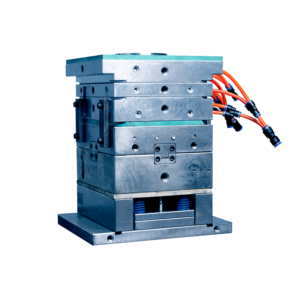Hey! Guys, welcome to a thrilling exploration into the universe of Liquid Silicone Rubber (LSR) Injection Molding! Today’s spotlight is on “Mastering LSR Injection Molding: Key Design Considerations.” Ever wondered why delving into the nuances of design is crucial? Picture this: you’re an architect, shaping the future with state-of-the-art technology. Understanding the pivotal design considerations in LSR Injection Molding is akin to possessing a magic wand, transforming ordinary concepts into extraordinary wonders! The significance? It’s the key to unlocking efficiency, precision, and awe-inspiring results. This isn’t just about molding; it’s about crafting the future of innovation. Join us on a journey where technical details intertwine with creativity, promising you the wisdom to turn design dreams into tangible reality.Are you ready?Lets talk abou it.
Shrinkage, Parting Line, and Demolding:
LSR exhibits a post-demolding shrinkage of 2.5%-3%, influenced by mold and material temperatures, pressure, and product size. Thicker products experience less shrinkage, and additional contraction may occur with secondary vulcanization (0.5%-0.7%). Accurate determination of the parting line is crucial for effective mold design. Ventilation grooves in the parting line prevent air entrapment during mold filling. Demolding considerations include product geometry, parting surface position, and the use of slight chamfers for consistent affinity.There are four main points below.
Exhaust and Injection Point:
Effective air evacuation is crucial during LSR injection to prevent air entrapment. Vent groove dimensions (width: 1mm-3mm, depth: 0.004mm-0.005mm) are essential for optimal exhaust. Vacuuming the mold enhances exhaust efficiency, ensuring air-free products. Cold runner systems are preferred for LSR molding, maximizing efficiency and minimizing material waste. Injection nozzles with air control switches contribute to precise molding. Effective temperature intervals between hot mold cavities and cold runners are critical to prevent premature curing.
Demolding Techniques and Mold Materials:
Vulcanized LSR adheres to metal surfaces, but high-temperature tear strength enables easy release. Demolding techniques include pin demolding, pneumatic demolding, roller scraping, and plate stripping. Precision is crucial in the design of the stripper system to avoid overflow due to large gaps. Die support plates use non-alloy tool steel or pre-tempered steel for high-temperature resistance. Highly filled LSR may require materials with higher hardness, such as chrome-plated steel or specialized powder metal. Replaceable parts are designed for highly worn materials to extend mold life.
Temperature Control:
Electric heating methods, such as strip heaters, barrel heaters, or heating plates, are suitable for LSR molding. Even temperature distribution throughout the mold is essential for uniform curing. Proper separation between hot and cold ends in a cold runner system is crucial.
In conclusion, meticulous attention to shrinkage, parting lines, exhaust, injection points, demolding, mold materials, and temperature control ensures successful LSR injection molding. Adhering to these design principles maximizes efficiency, quality, and economic benefits for silicon rubber processors.
Are you ready to join us, you’re always welcome, and if you can, I’d like to know your opinions related to this blog of ours.